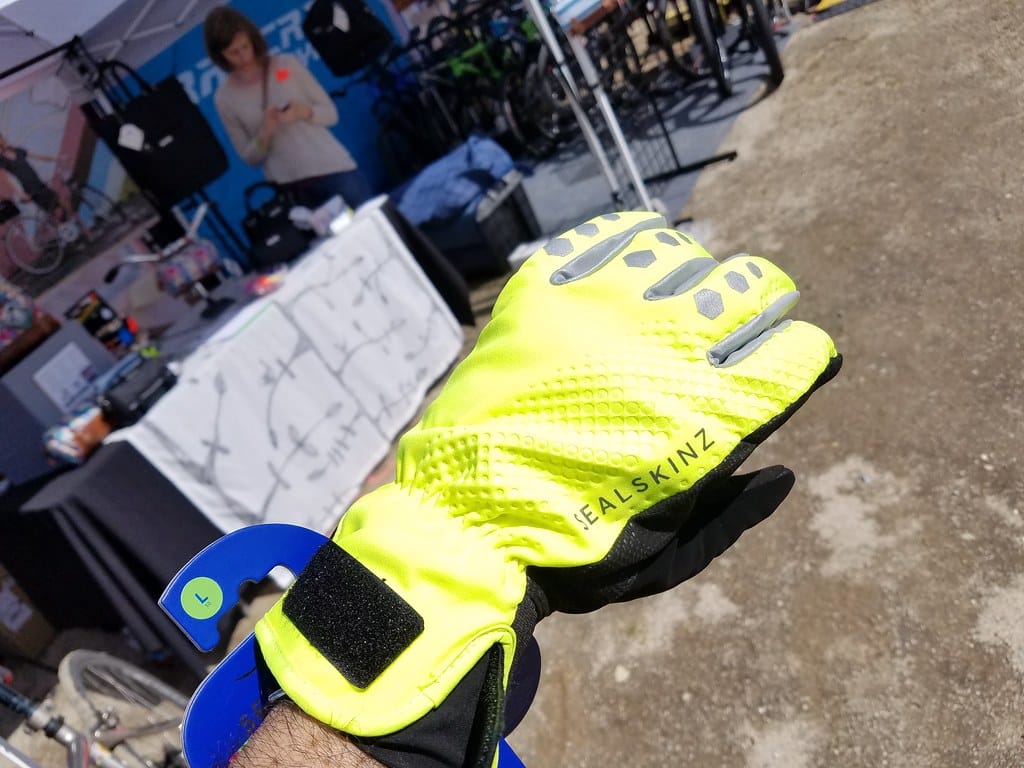
Working with chemicals without the correct gloves can lead to severe burns, toxic exposure, or long-term health issues. The biggest challenge for buyers? There is no universal chemical glove. A nitrile glove might protect against oils but fail against strong solvents in under a minute. This article explains how to match glove material to chemical risk, includes real-life accident reports, and gives you a step-by-step buyer’s guide.
Chemical-resistant gloves come in materials like nitrile, neoprene, PVC, butyl rubber, and PVA—each suitable for specific chemicals. OSHA requires gloves to be chosen based on the chemical’s type, concentration, and exposure duration. Always consult compatibility charts and check EN 374 or ASTM F739 ratings before purchase.
Why Chemical Protection Is Critical
- 10% of workplace hand injuries involve chemicals.
- Chemical burns can cause permanent scarring or systemic toxicity via skin absorption.
- OSHA fines for improper glove selection: up to $15,625 per violation.
Expanded Real-World Incidents:
Case #1 – Laboratory, USA:
A chemist wore nitrile gloves while working with acetone. Within 30 seconds, the gloves softened, and chemical permeated. The result: second-degree burns and skin absorption risk. Hospital stay: 4 days. Correct choice: Butyl gloves (ideal for ketones).Case #2 – Food Plant, UK:
Worker used PVC gloves for caustic soda cleaning. Gloves degraded during continuous use, causing deep chemical burns on both hands. Cost: £38,000 in lost production + medical care. Fix: EN 374 neoprene gloves for caustics.Case #3 – Oil Refinery, Middle East:
Maintenance team wore nitrile gloves for aromatic solvent handling. After 15 minutes, chemical breached gloves, causing dermatitis and systemic toxicity. The root cause: no compatibility check. Correct glove: PVA (excellent solvent resistance).Case #4 – Automotive Paint Shop, Germany:
A painter stripped coatings using MEK (methyl ethyl ketone) while wearing latex gloves. Gloves dissolved in minutes. Worker suffered burns, OSHA-equivalent fine: €12,000. Right solution: Butyl or laminate gloves.Case #5 – Pharmaceutical Facility, India:
Operator double-gloved with nitrile for handling 50% sulfuric acid. Gloves blistered in 2 minutes due to high concentration. Correct choice: PVC-coated gloves designed for strong acids.
Understanding Glove Materials & Chemical Resistance
| Material | Best For | Limitations |
|---|---|---|
| Nitrile | Oils, mild solvents, many acids | Weak against ketones, chlorinated solvents |
| Neoprene | Acids, caustics, alcohols | Not suitable for strong solvents |
| PVC | Strong acids, bases, salts | Poor solvent resistance, stiff in low temperatures |
| Butyl | Ketones (MEK, acetone), esters | Expensive, less abrasion resistance |
| PVA | Aromatic & chlorinated solvents | Dissolves in water—never use in wet conditions |
| Multi-layer Laminate | Mixed chemicals, unknown hazards | Expensive but offers broad-spectrum resistance |
Pro Buyer Tip: Always use chemical compatibility charts (e.g., DuPont™, Ansell®) and cross-check SDS data before finalizing PPE.
Key Factors When Selecting Chemical Gloves
- Chemical name and concentration (from SDS Section 9)
- Physical form: Liquid, vapor, or slurry (vapors increase risk)
- Exposure duration: Splash vs. full immersion
- Work environment: Temperature, mechanical hazards, humidity
- Secondary hazards: Cuts, abrasions, punctures
Common Mistakes Buyers Make
- Choosing gloves based on marketing claims, not chemical testing.
- Using thicker nitrile gloves for strong solvents (fails within minutes).
- Ignoring temperature impact (heat speeds up permeation).
- Overlooking chemical mixtures, which often degrade gloves faster.
- Skipping inspection after storage—old gloves lose resistance.
Industry Applications
| Industry | Typical Chemicals | Recommended Gloves |
|---|---|---|
| Pharmaceutical | Alcohols, mild acids | Nitrile or neoprene |
| Oil & Gas | Aromatic solvents, fuels | PVA or multi-layer laminate |
| Food Processing | Caustic soda, sanitizers | PVC or neoprene |
| Automotive | Paint thinners, MEK solvents | Butyl or PVA |
| Chemical Labs | Unknown mixtures | Multi-layer laminate gloves |
The Real Cost of Wrong Choices
- Direct treatment cost: $15,000–$50,000 per case
- OSHA penalties: $15,625 per violation
- Lost production time: 1–3 days minimum per incident
- Failed audits = loss of ISO, HACCP, or customer contracts
Audit Fact: In 2023, 45% of chemical burn claims were traced to incorrect glove material selection.
Quick Procurement Checklist
- [ ] Identify chemicals (from SDS)
- [ ] Check compatibility charts for correct glove material
- [ ] Verify EN 374 or ASTM F739 certification
- [ ] Select proper thickness and cuff length for immersion tasks
- [ ] Include liners for comfort during long wear
- [ ] Maintain inventory rotation (track expiry dates)
Buyer FAQ
Q: Can double-gloving replace specialty chemical gloves?
A: No. Doubling up nitrile gloves does not protect against strong solvents.Q: How do I check glove compatibility?
A: Use manufacturer charts; check breakthrough time and degradation rating.Q: Do gloves expire?
A: Yes. Rubber and polymer gloves degrade—always check date codes.
Additional Buyer Insights
- For unknown hazards, choose multi-layer laminate gloves as a safe fallback.
- Combine chemical gloves with cut-resistant liners when handling sharp containers.
- Train staff on donning/doffing—contamination often occurs during glove removal.
Conclusion
Chemical-resistant gloves are not one-size-fits-all. Selecting the wrong material can lead to catastrophic injuries and compliance failures. Always use compatibility charts, consider task specifics, and verify certification before purchase.
Need EN 374-certified gloves for acids, solvents, or mixed hazards?
📩 Email: [email protected]
🌐 Website: www.workwearsolutions.net
Zion Zhang
Recent Posts
 Fatigue-Monitoring Smart Vests2025年12月23日Data-Driven Fatigue Prevention for Food Processing and Cold […]
Fatigue-Monitoring Smart Vests2025年12月23日Data-Driven Fatigue Prevention for Food Processing and Cold […] 100-Wash Antimicrobial Durability: Long-Lasting Hygiene Protection for Food and Healthcare Industries2025年12月20日Food processing plants and healthcare facilities are […]
100-Wash Antimicrobial Durability: Long-Lasting Hygiene Protection for Food and Healthcare Industries2025年12月20日Food processing plants and healthcare facilities are […] Future Reflective Materials: Adaptive Visibility for High-Mobility and High-Risk Work Environments2025年12月19日Modern industrial workplaces are evolving rapidly. […]
Future Reflective Materials: Adaptive Visibility for High-Mobility and High-Risk Work Environments2025年12月19日Modern industrial workplaces are evolving rapidly. […] Next-Gen FR Fabrics: Lighter, Softer, and More Durable Flame-Resistant Workwear for Long Shifts2025年12月18日For decades, flame-resistant (FR) workwear has been […]
Next-Gen FR Fabrics: Lighter, Softer, and More Durable Flame-Resistant Workwear for Long Shifts2025年12月18日For decades, flame-resistant (FR) workwear has been […] Nano-Coatings Reduce Washing Frequency: Smarter Workwear for Cleaner, More Efficient Operations2025年12月17日Industrial workwear is no longer evaluated solely on […]
Nano-Coatings Reduce Washing Frequency: Smarter Workwear for Cleaner, More Efficient Operations2025年12月17日Industrial workwear is no longer evaluated solely on […] Self-Healing Fabrics: The Future of Durable Protective Workwear in Extreme Industries2025年12月16日Self-healing fabrics represent one of the most […]
Self-Healing Fabrics: The Future of Durable Protective Workwear in Extreme Industries2025年12月16日Self-healing fabrics represent one of the most […]
CONTACT US
- Feel free to contact us any time. We will get back to you as soon as we can!
- +86-17330061805
